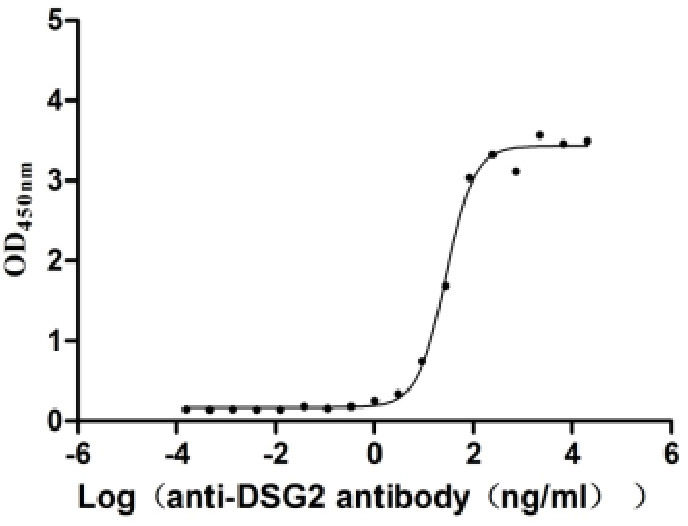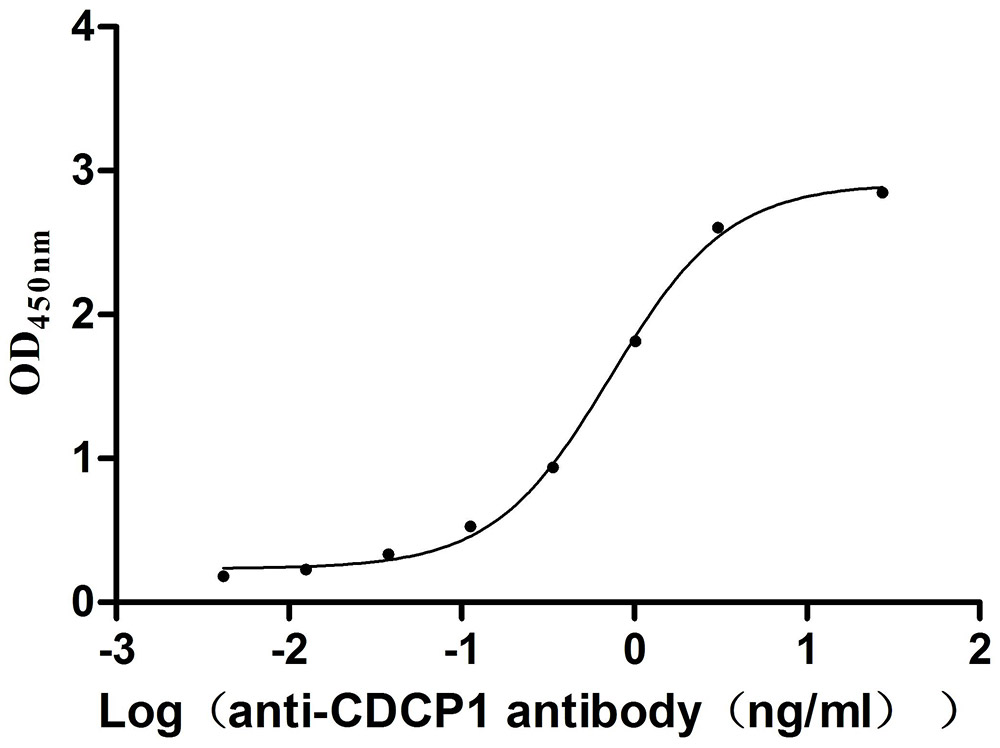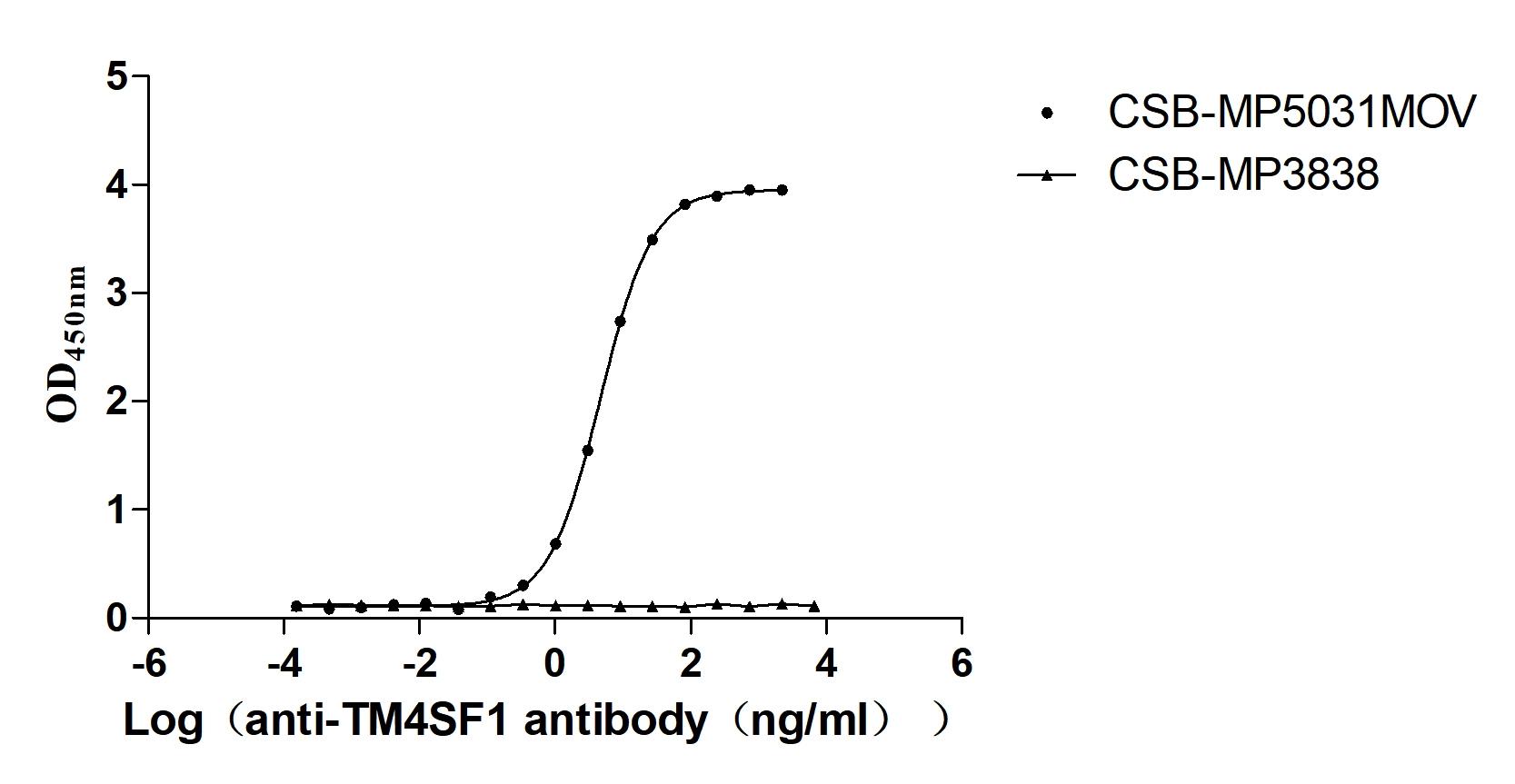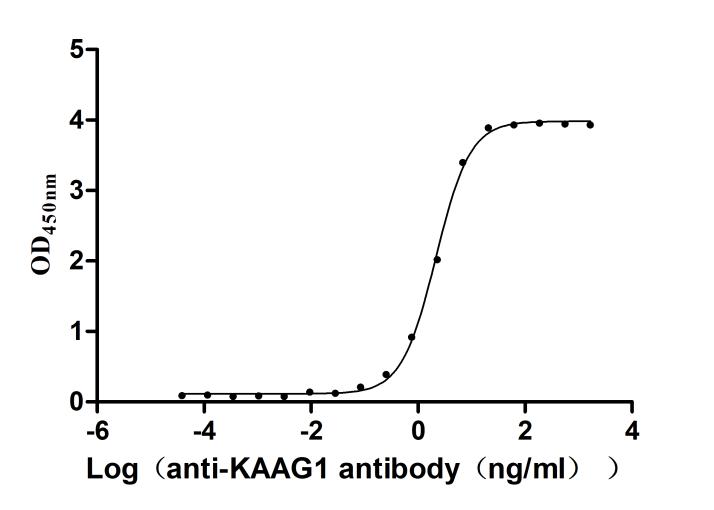Recombinant Arabidopsis thaliana ATP-dependent helicase BRM (BRM), partial
-
中文名稱:Recombinant Arabidopsis thaliana ATP-dependent helicase BRM(BRM) ,partial
-
貨號:CSB-YP732313DOA
-
規(guī)格:
-
來源:Yeast
-
其他:
-
中文名稱:Recombinant Arabidopsis thaliana ATP-dependent helicase BRM(BRM) ,partial
-
貨號:CSB-EP732313DOA
-
規(guī)格:
-
來源:E.coli
-
其他:
-
中文名稱:Recombinant Arabidopsis thaliana ATP-dependent helicase BRM(BRM) ,partial
-
貨號:CSB-EP732313DOA-B
-
規(guī)格:
-
來源:E.coli
-
共軛:Avi-tag Biotinylated
E. coli biotin ligase (BirA) is highly specific in covalently attaching biotin to the 15 amino acid AviTag peptide. This recombinant protein was biotinylated in vivo by AviTag-BirA technology, which method is BriA catalyzes amide linkage between the biotin and the specific lysine of the AviTag.
-
其他:
-
中文名稱:Recombinant Arabidopsis thaliana ATP-dependent helicase BRM(BRM) ,partial
-
貨號:CSB-BP732313DOA
-
規(guī)格:
-
來源:Baculovirus
-
其他:
-
中文名稱:Recombinant Arabidopsis thaliana ATP-dependent helicase BRM(BRM) ,partial
-
貨號:CSB-MP732313DOA
-
規(guī)格:
-
來源:Mammalian cell
-
其他:
產(chǎn)品詳情
-
純度:>85% (SDS-PAGE)
-
基因名:BRM
-
Uniprot No.:
-
別名:BRM; CHR2; At2g46020; F4I18; T3F17.33; ATP-dependent helicase BRM; EC 3.6.4.12; Protein BRAHMA; AtBRM; Protein CHROMATIN REMODELING 2; AtCHR2
-
種屬:Arabidopsis thaliana (Mouse-ear cress)
-
蛋白長度:Partial
-
蛋白標(biāo)簽:Tag?type?will?be?determined?during?the?manufacturing?process.
The tag type will be determined during production process. If you have specified tag type, please tell us and we will develop the specified tag preferentially. -
產(chǎn)品提供形式:Lyophilized powder
Note: We will preferentially ship the format that we have in stock, however, if you have any special requirement for the format, please remark your requirement when placing the order, we will prepare according to your demand. -
復(fù)溶:We recommend that this vial be briefly centrifuged prior to opening to bring the contents to the bottom. Please reconstitute protein in deionized sterile water to a concentration of 0.1-1.0 mg/mL.We recommend to add 5-50% of glycerol (final concentration) and aliquot for long-term storage at -20℃/-80℃. Our default final concentration of glycerol is 50%. Customers could use it as reference.
-
儲存條件:Store at -20°C/-80°C upon receipt, aliquoting is necessary for mutiple use. Avoid repeated freeze-thaw cycles.
-
保質(zhì)期:The shelf life is related to many factors, storage state, buffer ingredients, storage temperature and the stability of the protein itself.
Generally, the shelf life of liquid form is 6 months at -20°C/-80°C. The shelf life of lyophilized form is 12 months at -20°C/-80°C. -
貨期:Delivery time may differ from different purchasing way or location, please kindly consult your local distributors for specific delivery time.Note: All of our proteins are default shipped with normal blue ice packs, if you request to ship with dry ice, please communicate with us in advance and extra fees will be charged.
-
注意事項(xiàng):Repeated freezing and thawing is not recommended. Store working aliquots at 4°C for up to one week.
-
Datasheet :Please contact us to get it.
靶點(diǎn)詳情
-
功能:ATPase subunit of a multiprotein complex equivalent of the SWI/SNF complex that acts by remodeling the chromatin by catalyzing an ATP-dependent alteration in the structure of nucleosomal DNA. Represses embryonic genes in leaves and controls shoot development and flowering. Activates flower homeotic genes. The association of BRM with its target genes requires REF6. Necessary to acquire heat stress (HS) memory, by globally binding to HS memory genes.
-
基因功能參考文獻(xiàn):
- study uncovers pri-miRNAs as a substrate of CHR2, and an additional regulatory layer upstream of Microprocessor activity to control miRNA accumulation PMID: 29769717
- data indicate that the chromatin-remodeling enzyme BRM modulates PORC expression through interacting with PIF1, providing a novel regulatory mechanism by which plants fine-tune chlorophyll biosynthesis PMID: 27865928
- Data show that mutants of Brahma (BRM) and AtMMS21 displayed a similar defect in root development. PMID: 28115583
- BRM and SWN act antagonistically at the nucleosome level to fine-tune the temporal expression of miR156 to regulate vegetative phase change in Arabidopsis. PMID: 27803189
- while BRM predominantly regulates its target genes by binding to their promoters, many genes are bound by BRM at their 3 ends. These 3 regions serve as promoters of non-coding transcription extensively regulated by BRM. PMID: 27994035
- Genome-wide analyses showed that REF6 colocalizes with BRM at many genomic sites with the CTCTGYTY motif. Loss of REF6 results in decreased BRM occupancy at BRM-REF6 co-targets PMID: 27111034
- results suggest that phosphorylation of BRM by SnRK2s is a mechanism to release BRM-mediated repression of ABI5 expression and, thus, ABA response, whereas PP2C-mediated dephosphorylation of BRM likely maintains the repressive function of BRM on ABA PMID: 26499068
- acts in the PLT pathway to maintain the root stem cell niche by altering the expression of PINs PMID: 25991732
- our results indicate that BP interacts with the chromatin remodeling factor BRM to regulate the expression of KNAT2 and KNAT6 in control of inflorescence architecture. PMID: 25822547
- our gain- and loss-of-function genetic evidence establishes that BRM controls flowering time by directly activating SVP expression PMID: 25615622
- BRM as a positive regulator of GA-mediated responses and reveal diverse (both direct and indirect) interactions between SWI/SNF BRM ATPase and the GA pathway. PMID: 23536800
- characterization at the molecular and functional level, the carboxy-terminal part of Arabidopsis BRM. We have found three DNA-binding regions that bind various free DNA and nucleosomal probes with different specificity PMID: 17825834
- mediates the repression of seed storage proteins in leaf tissue PMID: 18508955
- Results show that despite the overall similarity of brm and atswi3c phenotypes, a critical requirement for BRM in the differentiation of reproductive organs suggests that its regulatory functions do not entirely overlap those of ATSWI3C. PMID: 19301030
顯示更多
收起更多
-
亞細(xì)胞定位:Nucleus.
-
蛋白家族:SNF2/RAD54 helicase family
-
組織特異性:Highly expressed in inflorescences and leaves. Low expression in siliques, roots and seedlings. Detected in shoot apical meristem, root meristem, vascular tissue of developing leaves, petals, stamens filaments, anthers and carpels.
-
數(shù)據(jù)庫鏈接:
Most popular with customers
-
Recombinant Dog B-lymphocyte antigen CD20 (MS4A1)-VLPs (Active)
Express system: Mammalian cell
Species: Canis lupus familiaris (Dog) (Canis familiaris)
-
Express system: Mammalian cell
Species: Homo sapiens (Human)
-
Recombinant Human Desmoglein-2 (DSG2), partial (Active)
Express system: Mammalian cell
Species: Homo sapiens (Human)
-
Recombinant Human Transferrin receptor protein 1 (TFRC), partial (Active)
Express system: Mammalian cell
Species: Homo sapiens (Human)
-
Recombinant Mouse CUB domain-containing protein 1 (Cdcp1), partial (Active)
Express system: Mammalian cell
Species: Mus musculus (Mouse)
-
Recombinant Macaca fascicularis Transmembrane 4 L6 family member 1 (TM4SF1)-VLPs (Active)
Express system: Mammalian cell
Species: Macaca fascicularis (Crab-eating macaque) (Cynomolgus monkey)
-
Recombinant Human Kidney-associated antigen 1 (KAAG1) (Active)
Express system: E.coli
Species: Homo sapiens (Human)


















